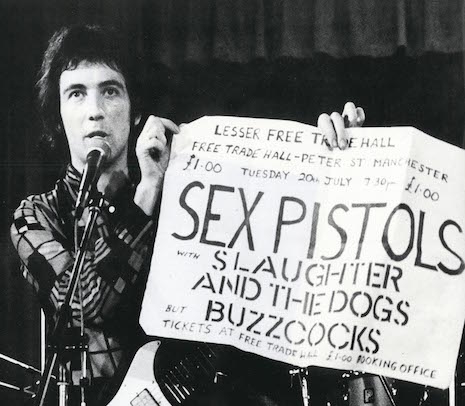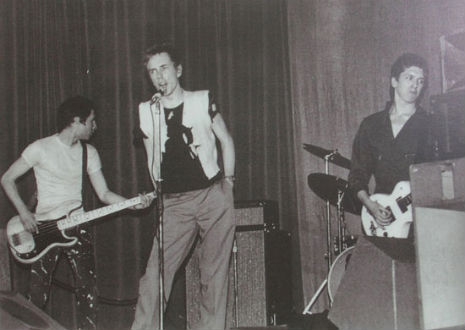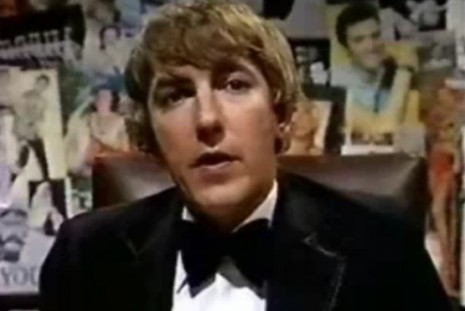
‘Rust in Peace.’
The chance decisions we make in our teens can sometimes bring wondrous returns.
John Maher was just sixteen when he was asked to play drums for a local band called the Buzzcocks in 1976. The Buzzcocks had been formed by Peter Shelley and Howard Devoto in Manchester in late 1975. Maher didn’t really think about it—he just said yes. His first gig playing drums with the band was supporting the Sex Pistols at their second (now legendary) appearance at the Lesser Free Trade Hall, Manchester, in July 1976.
When he was eighteen, Maher bought his first camera—an Olympus Trip—just prior to the Buzzcocks tour of America in 1978. Photography was something to do on the road—but for Maher it was soon became a passion.
After the Buzzcocks split in 1981, Maher played drums for Wah! and Flag of Convenience. But his interest in music waned. When the Buzzcocks reformed in 1989, Maher opted out—only ever making occasional guest appearances with the band.
Maher had an interest in drag racing which led to his launching an incredibly successful business making high performance engines—John Maher Racing. His engines and transmissions are described as the best built in the UK. The success of his company allowed Maher to retire. It was then that he returned to photography.
In 2002, Maher relocated from Manchester to the Isle of Harris in Scotland. The beautiful, bleak Hebridean landscape was in stark contrast to his busy post-industrial hometown of Manchester. The land inspired Maher and he became fascinated with the deserted crofts dotted across the island. Homes once filled with working families and children now lay abandoned in disrepair—belongings scattered across wooden floors, empty chairs faithfully waiting for a new owner, wallpaper and paint drifting from the walls, windows smashed, and gardens long untended.
Maher started documenting these abandoned buildings that spoke more to him about human life than most museums. He took long exposures to achieve a certain look—often blending analogue and digital images to create the best picture. For example, the photograph TV Set was created from “a compilation of nine separate exposures.”
His fascination with the deserted crofts started an idea to have these homes reclaimed and reused bringing new life back to the island. As Maher told the BBC earlier this year:
“What started out as a personal project—documenting abandoned croft houses in the Outer Hebrides—has had an unexpected side effect.
“As a result of displaying my photographs, there’s now a real possibility of seeing at least one of the properties becoming a family home once again.”
Maher’s photographs led to a joint venture by the Carnegie Trust and the local housing association to start renovating some of Harris’s derelict buildings for habitation. Maher’s photographs have been exhibited on the isle and across the UK. “It shows,” he says, “that looking through a lens to the past can help shape things in the future.”
See more of John Maher’s work here.

‘Waiting Room.’

‘Blue Chair.’
More of ex-Buzzcock John Maher’s work, after the jump….













